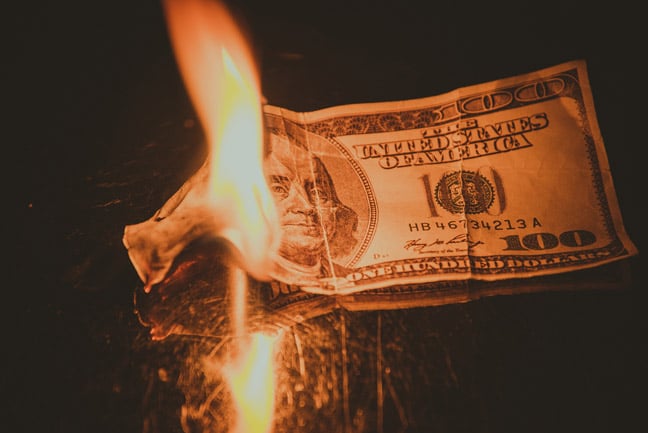
Just a couple of years ago you’d have no trouble finding some celebrity hawking a non-fungible token (NFT) project. But how quickly times change, as now, even websites dedicated to gambling with cryptocurrency are warning people to stay away from NFTs.
For those who don’t recall, NFTs are entries on a blockchain, typically the Ethereum blockchain, that represent ownership of assets – usually a digital asset like an image file or in-game item, but NFTs could also be tied to physical items.
Back in their 2021-22 heyday, collectors were paying millions for NFTs, but crypto gambling website dappGambl now says that most are worthless.
After looking at 73,257 NFT collections (a collection can contain any number of NFTs that can each be bought and sold) based on data from CoinMarketCap and NFTScan, dappGambl said it determined that 69,795 of those collections have a market cap of 0 Ether.
“This statistic effectively means that 95 percent of people holding NFT collections are currently holding onto worthless investments,” dappGambl said in its report. “Having looked into those figures, we would estimate that 95 percent to include over 23 million people whose investments are now worthless.”
Gigantic supply, meet shrinking demand
While millions may be out the value of their NFT purchase, there are still a ton of NFTs that have gone unsold, which is a problem too. According to dappGambl’s analysis, only 21 percent of the NFT collections it examined were fully spoken for, which it said ultimately means four out of every five NFTs remain unsold.
“It is a stark reminder that, while the NFT space has introduced a revolutionary new model for ownership and the monetization of digital assets, it remains a highly speculative and volatile market,” the researchers said.
Value, too, remains an issue, dappGambl found. Eighteen percent of the top NFT collections identified by CoinMarketCap have a floor price of zero, “indicating that a significant portion of even the most prominent collections are struggling to maintain demand,” dappGambl said.
Additionally, 41 percent of NFTs are priced between $5 and $100, and less than 1 percent are valued above $6,000, all of which points to genuine value in the NFT market being hard to find, said dappGambl. That, in turn, led researchers to conclude that the situation could be even more bleak than the data suggests.
One project, said the researchers, had a floor price of more than $13 million, but all-time sales of just $18. “It becomes clear that a significant portion of the NFT market is characterized by speculative and hopeful pricing strategies that are far removed from the actual trading history of these assets,” dappGambl said.
In other words, the bottom on the NFT market has well and truly fallen out.
Meanwhile, NFT creators keep burning that carbon
Cryptocurrencies and their blockchain-adjacent NFT neighbors require computers, and computers require power. If we’re going to burn all this energy on cryptocurrencies and NFTs, they’d better be worth the power being used to create them and power their blockchains, but that doesn’t appear to be the case – especially as the NFT market collapses.
NFTs, being registered on a blockchain and not mined mathematically like currencies, don’t expend energy in the same way, but are still responsible for a lot of carbon being spilled into the atmosphere to mint them onto blockchains and power their continued existence.
In addition to the 73,000 collections of NFTs that dappGambl examined for its report, it identified an additional 195,699 NFT collections “with no apparent owners or market share.”
The energy required to mint the NFTs included in those collections, dappGambl claims, is equivalent to 27,789,258kWh of energy, or approximately 16,243 metric tons of CO2. Figures for the energy cost to mint a single NFT are widely available online. dappGambl said that equates to the yearly energy emissions of 2,048 US homes, 3,531 US automobiles, or 4,061 passengers flying from London, UK, to Wellington, NZ, all being burned to create NFT collections that no one buys.
The solution proposed by dappGambl is to only mint NFTs with utility, like in-game assets, token-gated access to events, or links to physical products. Or – bear with me here – we can decide this entire NFT fiasco was a bad idea that didn’t actually create anything of value. That’s what the numbers suggest, after all. ®
Tell your friends
Some readers ask us if they can support The Register through some kind of subscription. The best way to back El Reg and keep our journalism flowing is to spread the word on social media, tell a colleague, sign up for a Register account and our newsletters, and comment away on articles.
Find and share us on Bluesky, LinkedIn, and Twitter. Tip us off with news. And thank you for reading.






